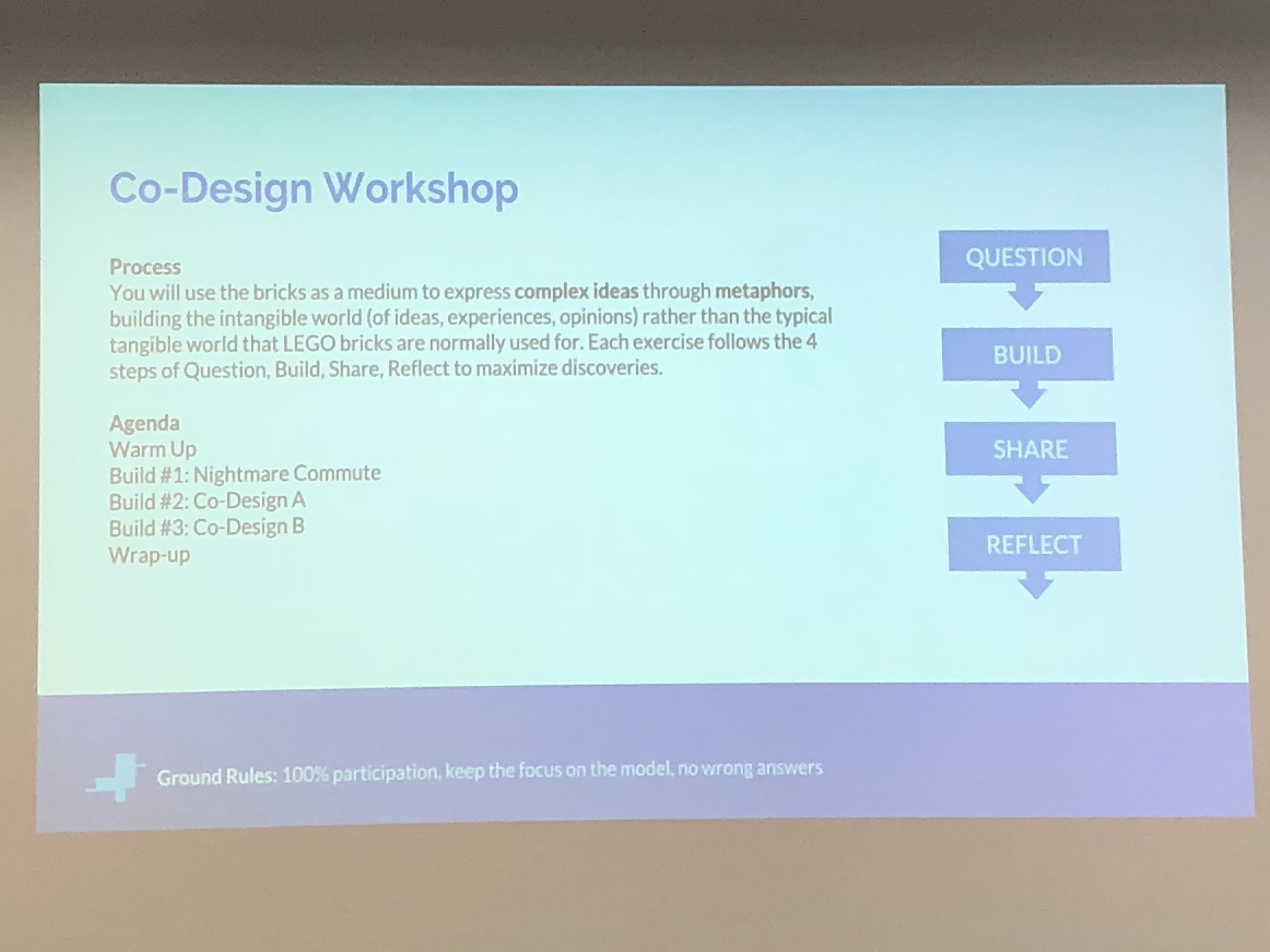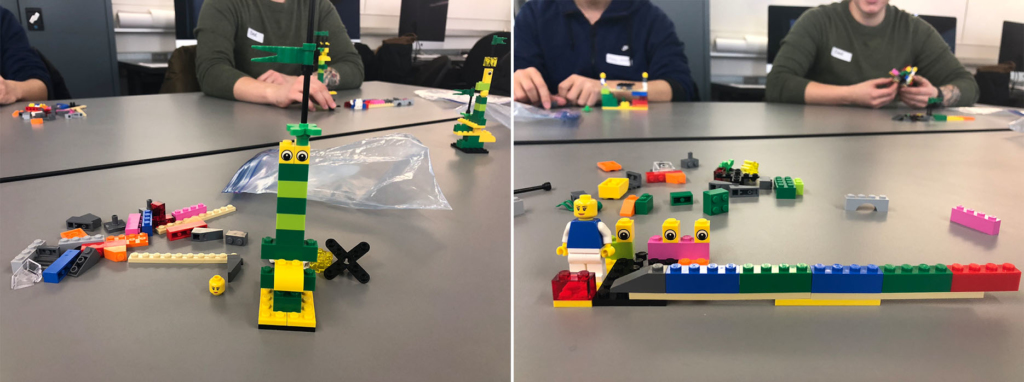When it comes to “LEGO”, what would you think of? Toy? Game? Or brick?
Today I want to talk about a more “serious” side of LEGO – the LEGO® Serious Play®. It’s not a game, it’s a methodology from LEGO which uses LEGO bricks to improve creative thinking and develop problem-solving skills. In UX field, many researchers start using it to conduct UX research. In the class of Advanced Design Research, two LEGO® Serious Play® Certified Facilitators came and held an excellent workshop to demonstrate how we can potentially use the method for our future design research.

What is LEGO® Serious Play®
20 years ago, in the late 1990’s, LEGO® Serious Play® was first created by two business professors from Switzerland’s Institute for Management Development (Johan Roos and Victor Bart) and the leader of The Lego Group (Kjeld Kristiansen). The initial goals of LEGO® Serious Play® were to help business executive develop their own strategies and enhance communication in teams. The method became open source in 2009. There are some non-profit communities, which is not affiliated with LEGO®, train and certify facilitator and bring together a professional network to enhance related theories and develop more applications, such as SeriousPlayPro.com.

During the class, the facilitators held two co-design sessions for the students to demonstrate how the LEGO® Serious Play® works. There are four steps of each session: Question, Build, Share, and Reflect. With the ground rules of “100% participation, keep the focus on the model, no wrong answers.”, we had a really good experience of creative thinking and problem-solving. Each student built two 3D models with the assigned LEGO bricks and was able to share their ideas with the entire team. I’m amazed by the creativity everyone has and the excellent “sharing” atmosphere during the exercises. I found myself know my classmates much better after the co-design workshop.

Why it works
It gets people think & build
Nowadays, procrastination is a very popular topic. People tend to procrastinate because it is difficult for them to start working. Yes, it may be hard to start writing, but it is very easy to start playing with these colorful and cute bricks. While at the time you start building your model, your brain starts thinking (that’s the hardest part, right?). Besides, it is super easy to disassemble and rebuild the bricks, so there is very little “sunk cost” to try out new ideas.
It gets people talk & share
It is not uncommon that sometimes we find ourselves can’t verbalize the thoughts in our head, or there are people who are less talented in presenting which makes they tend to keep silent in a meeting. In the SlideShare of Patrizia Bertini, she talks about how people lean backward in a normal meeting, and how LEGO® Serious Play® can change participants’ attitude by changing their postures. “Everyone participants” is the ground rule. By knowing they need to share at the end of the exercises and knowing there must be something for them to share (their LEGO model!), participants are not only more willing to share but also more prepared to showcase their ideas.

It gets people know each other
When doing research about the LEGO® Serious Play®, there is a quote I saw a lot: “You learn more about a person in an hour of play than a year of conversation.“ That’s entirely true! Because everyone needs to build with the same bricks for the same goal, and everyone needs to share what their ideas are and where the ideas come from, you get to know each other much more (than being classmates for a semester in my case). You will be surprised by how a quiet person may have the most creative idea.
When to use it in design research
As mentioned in the beginning, LEGO® Serious Play® is a great method for conducting design research. It can be held as a co-design session to invite community members to brainstorm design solutions. Or it can be just used to understand users, for example, understand the user journey for a specific scenario. It is specifically suitable for understanding the problems in the real life, where we can use the LEGO bricks to build 3D models to illustrate the ideas.
Relatively, it is probably not an ideal method for doing research for digital products in some cases, especially mobile digital products. Because most digital products are 2D screen, and relatively small, so it will be a little difficult to build with the LEGO bricks. However, it is still a good way to understand user problems and user scenario, which are the start of any kind of design.
Another potential limitation of LEGO® Serious Play® is the design will be limited to the bricks being provided. Therefore, it should mostly be used in the early stage of product development, instead of the prototype stage in the end. Nevertheless, it is always a good way to starting brainstorming or being the icebreaker for team meetings.
References:
[1] LEGO website: https://www.lego.com/en-us/seriousplay
[2] SeriousPlayPro.com
[2] Using LEGO® Serious Play® in UX Research: https://medium.com/@ksoucy/using-lego-serious-play-in-ux-research-287296d86204
[3] Lego serious play usage in UX design: https://medium.com/@ergomania_UX/lego-serious-play-usage-in-ux-design-4c27c54e1451
[4] LEGO Serious Play: bringing creative collaboration in UX: https://www.slideshare.net/patbertini/mex-lsp-light-upload
